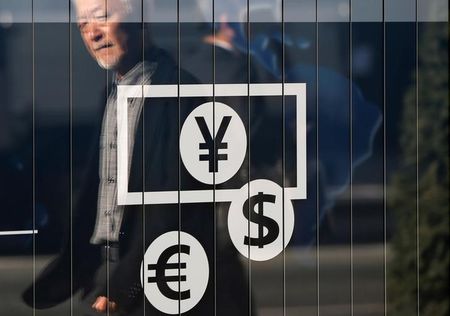

Investing.com – Donald Trump's inauguration week began with a comfortable rise in G10 currencies against the US dollar, led by a Wall Street Journal report indicating a possible delay in tariffs.
UBS strategists, citing a short-term valuation model, analyzed the rally, assessing the extent of tariff risks priced in currencies as of the previous Friday, and thus the potential for near-term US dollar weakness.
According to UBS, the most imbalanced currencies at the beginning of the week were the Euro, Australian Dollar and New Zealand Dollar, with fair values (FVs) of around 1.0450, 0.6400 and 0.5750 respectively.
While UBS sees the euro as likely to reach its target in the near term, they are more skeptical about a surge in commodity currencies such as the Australian dollar and the New Zealand dollar, citing continued currency depreciation and ongoing weakness in China.
The investment bank also stresses that, with the exception of the Canadian dollar, long positions on the US dollar are not excessive enough to indicate a significant correction in the euro and Japanese yen.
“Ultimately, we believe dollar declines represent buying opportunities,” strategists led by Vasiliy Serebryakov said in a note.
While the focus remains on the dollar, UBS indicates that the yen is approaching a major risk event with the Bank of Japan meeting scheduled for January 24. Interest rates are already expected to rise by about 22 basis points, suggesting that a 25 basis point increase may not lead to significant gains for the Japanese yen, although it will reinforce the Bank of Japan's deviation from the global policy easing trend.
UBS's equity hedging rebalancing model also suggests the possibility of buying the Japanese yen at the end of the month.
Regarding the euro, strategists highlighted the currency's resilience over the past two years, despite weak fundamentals. They attributed this strength to the strong surplus in the balance of payments, driven by the return of foreign bond flows.
However, UBS warns that these flows, especially into French debt, could be at risk if French political uncertainty persists and the European Central Bank continues to cut interest rates.
“What we have seen so far is some weakness in demand for French debt, especially from Japanese investors, but overall bond flows remain resilient through November,” the strategists noted.
Looking ahead, they suggest keeping an eye on this sector as the attractiveness of the Eurozone yield environment for global investors may change.






